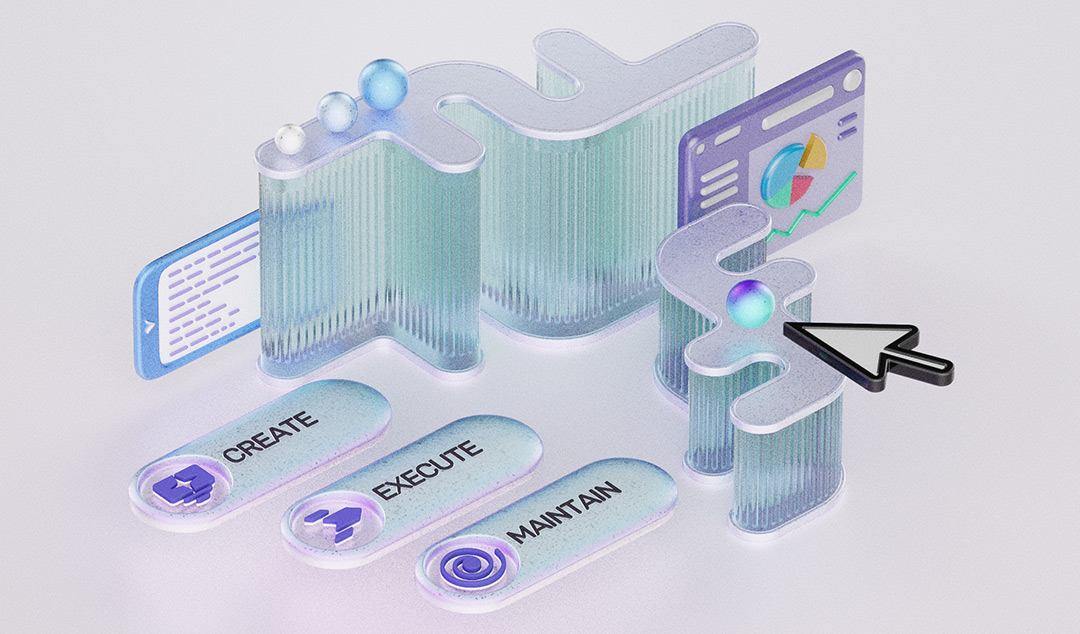The Economics of AI Testing: From Multi-Person Teams to Single-User Solutions
Discover how AI testing transforms QA economics, reducing costs from 30% to under 10% of engineering budgets while improving quality and release velocity.

Enterprise leaders face a fundamental challenge: traditional quality assurance consumes 30% of engineering budgets while delivering inconsistent results.
Manual testing processes, script-heavy automation, and brittle tools create bottlenecks that slow releases and compromise quality. Agentic AI testing platforms are transforming this equation, enabling organizations to reduce QA costs to under 10% of engineering spend while dramatically improving coverage and release velocity.
The transformation isn't incremental, it's revolutionary. Organizations implementing AI-driven testing solutions report productivity gains of 5x or more, with some achieving 90% autonomous quality operations. This shift represents more than operational efficiency; it fundamentally changes how businesses approach software quality, moving from reactive testing to proactive quality assurance integrated directly into the development process.
Understanding the economic impact requires examining both visible costs and hidden expenses that plague traditional QA approaches. Legacy testing methods create technical debt, maintenance overhead, and competitive disadvantages that extend far beyond direct personnel costs. Agentic AI platforms eliminate these inefficiencies while enabling quality at the scale and speed modern businesses demand.
Quantifying the Economic Impact of AI Testing Transformation
Traditional QA Economics: The Hidden Cost Crisis
Traditional quality assurance operations carry substantial visible and hidden costs that impact organizational efficiency and competitive positioning. Resource requirements alone represent significant investment, specialized automation engineers command premium salaries, test maintenance personnel spend 70% of their time updating brittle scripts, and infrastructure costs scale linearly with testing complexity.
Personnel expenses represent just the beginning. Organizations typically require dedicated automation engineers, test maintenance specialists, and quality analysts to manage increasingly complex testing environments. These teams often work in silos, creating communication overhead and coordination challenges that further inflate costs.
Infrastructure and tooling expenses compound these challenges. Enterprise testing environments require substantial compute resources, specialized software licenses, and complex integration frameworks. Tool proliferation creates vendor lock-in scenarios where organizations pay for multiple overlapping solutions without achieving comprehensive coverage.
Time-to-market delays represent perhaps the most significant hidden cost. Traditional testing approaches often require three months to establish monthly release cycles, directly impacting revenue potential and competitive positioning. Market research indicates that delayed product launches can cost enterprises millions in lost revenue and market share.
Hidden Costs That Drain Resources
Technical debt accumulation creates cascading economic impact. Legacy test scripts become increasingly brittle over time, requiring constant maintenance that diverts engineering resources from innovation. Organizations report spending 60-80% of testing budgets on maintenance rather than expanding coverage or improving quality.
Production defect remediation costs extend beyond immediate fixes. Customer-facing issues damage brand reputation, require emergency response teams, and create a support burden that impacts customer satisfaction metrics. Studies show that post-production defects cost 10-100 times more to resolve than issues caught during development.
Customer satisfaction impact translates directly to revenue loss. Poor software quality leads to increased churn, reduced user engagement, and negative reviews that influence purchasing decisions. B2B organizations particularly struggle with quality issues that impact customer relationships and renewal rates.
Competitive disadvantage becomes inevitable when quality processes constrain innovation velocity. Organizations unable to release quickly and reliably fall behind competitors who can respond rapidly to market demands and customer feedback.
Agentic AI Economic Model: Transformation Through Automation
Agentic AI testing platforms fundamentally restructure QA economics by eliminating manual processes and reducing resource requirements. Single-user test creation capabilities enable product teams to generate comprehensive test suites directly from user stories and acceptance criteria, removing the need for specialized automation engineers.
Automated maintenance elimination addresses the largest cost driver in traditional QA operations. AI-powered platforms use proprietary element identification models that achieve 99.97% accuracy, reducing test breakage from typical 30% rates to 3-5%. This transformation cuts maintenance overhead by 80% while improving reliability.

Self-service quality validation empowers development teams to validate changes independently, reducing bottlenecks and enabling continuous testing practices. Teams can create, execute, and maintain tests without specialized QA expertise, democratizing quality assurance across the organization.
Resource Optimization Through AI
Personnel requirements shift dramatically with agentic AI implementation. Organizations can reduce dedicated QA staff by 60-80% while achieving higher coverage and quality outcomes. Remaining team members focus on strategic quality initiatives rather than manual test execution and maintenance.
Infrastructure cost savings emerge through cloud-native architectures and elastic scaling capabilities. AI-powered platforms leverage stateless microservices and auto-scaling technologies, eliminating the need for dedicated testing infrastructure and reducing compute costs by 40-60%.
Tool consolidation opportunities arise as comprehensive AI platforms replace multiple point solutions. Organizations can eliminate separate tools for test creation, execution, maintenance, reporting, and management, reducing licensing costs and integration complexity.
ROI Calculation Framework: Measuring Transformation Value
Cost Reduction Analysis
Personnel cost savings represent the most immediate and measurable benefit of AI testing transformation. Organizations typically achieve 60-80% reduction in QA-specific headcount while maintaining or improving quality outcomes. For enterprise organizations, this translates to annual savings of $2-5 million in personnel costs alone.
Infrastructure optimization delivers additional savings through cloud-native architectures and elastic scaling. Traditional testing environments require substantial fixed infrastructure investments, while AI-powered platforms scale dynamically based on demand. Organizations report 40-60% reduction in testing infrastructure costs.
Tool licensing consolidation eliminates redundant software purchases and reduces vendor management overhead. Comprehensive AI platforms replace multiple specialized tools, delivering 50-70% reduction in testing-related software licensing costs while improving integration and workflow efficiency.
Maintenance elimination provides ongoing cost benefits that compound over time. Traditional automation requires 3-5 hours of maintenance for every hour of test creation, while AI-powered platforms require minimal maintenance input. This shift frees engineering resources for value-generating activities.
Revenue Impact Assessment
Faster time-to-market benefits directly impact revenue generation capabilities. Organizations implementing AI testing report 60% improvement in release velocity, enabling more frequent feature releases and faster response to market opportunities. This acceleration can increase annual revenue by 10-15% for product-driven organizations.
Quality improvement value extends beyond defect reduction to encompass user experience enhancement and customer satisfaction improvements. Higher quality software increases user engagement, reduces support costs, and improves customer lifetime value metrics.
Customer satisfaction improvements translate to measurable business outcomes including reduced churn, increased renewal rates, and positive word-of-mouth marketing. B2B organizations particularly benefit from quality improvements that strengthen customer relationships and enable expansion opportunities.
Competitive advantage gains emerge from the ability to innovate rapidly while maintaining quality standards. Organizations can respond quickly to market demands, experiment with new features, and maintain competitive positioning through superior software quality and release velocity.
Industry Benchmarks and Case Studies: Proven Transformation Results
Enterprise Transformations
Large-scale implementations demonstrate the transformative potential of AI testing platforms. Fortune 500 organizations report achieving 90% autonomous quality operations within 18 months of implementation, with corresponding reductions in QA spend from 30% to under 10% of engineering budgets.
Multi-year ROI tracking reveals sustained benefits that improve over time. Organizations typically achieve payback within 12-18 months, with ongoing benefits increasing as teams optimize their use of AI capabilities and expand coverage to additional applications.
Organizational impact measurement extends beyond cost savings to encompass cultural transformation. Engineering teams report higher job satisfaction, increased innovation focus, and improved collaboration as manual testing burdens decrease and quality becomes integrated into development workflows.
SMB Success Stories
Resource-constrained implementations demonstrate AI testing accessibility across organization sizes. Small and medium businesses achieve proportionally greater benefits due to limited QA resources and the need for efficient quality processes that don't require specialized expertise.
Rapid value realization occurs because SMBs can implement comprehensive AI testing without legacy system constraints or complex organizational change management. These organizations often achieve full transformation within 6-12 months.
Scalability achievements enable growing businesses to maintain quality standards while expanding rapidly. AI testing platforms grow with organizations, providing consistent quality assurance regardless of team size or application complexity.
Investment Considerations: Planning for Success
Implementation Costs
Platform licensing and setup represent the primary initial investment, typically ranging from $50,000-500,000 annually depending on organization size and usage requirements. These costs are offset rapidly by personnel and infrastructure savings, with most organizations achieving positive ROI within the first year.
Training and change management require dedicated resources to ensure successful adoption. Organizations should budget for team training, process redesign, and stakeholder communication to maximize platform benefits and minimize resistance.
Integration and migration costs vary based on existing tool landscapes and application complexity. Comprehensive AI platforms provide extensive integration capabilities, but organizations may require professional services to optimize configurations and ensure smooth transitions.
Risk Mitigation
Vendor evaluation criteria should emphasize platform maturity, AI model sophistication, and customer success track records. Organizations should evaluate vendors based on their ability to deliver autonomous testing capabilities rather than incremental improvements to existing approaches.
Implementation risk assessment should consider organizational readiness, technical requirements, and change management capabilities. Successful implementations require executive sponsorship, clear success metrics, and dedicated resources for platform adoption.
Success measurement planning ensures organizations can track transformation progress and optimize platform usage. Key metrics include automation coverage, maintenance reduction, release velocity improvement, and defect rate reduction.
Financial Planning Framework: Budgeting for Transformation
Budget allocation strategies should prioritize platforms that deliver complete QA transformation rather than incremental tool improvements. Organizations achieve maximum ROI by investing in comprehensive solutions that eliminate multiple existing tools while providing superior capabilities.
Phased investment approaches enable organizations to manage risk while demonstrating value. Many organizations begin with pilot implementations on critical applications, expanding coverage as teams gain experience and confidence in AI testing capabilities.

Success metrics and KPIs should align with organizational objectives while measuring transformation progress. Key performance indicators include QA cost as percentage of engineering budget, test automation coverage, release frequency, and defect escape rates.
Organizations should track leading indicators such as test creation velocity, maintenance hours per test, and team satisfaction scores to ensure transformation initiatives remain on track and deliver expected benefits.
Building the Business Case for AI Testing Investment
The economic case for AI testing transformation extends beyond traditional cost-benefit analysis to encompass strategic competitive advantages and organizational capabilities. Forward-thinking enterprises recognize that quality assurance represents either a competitive differentiator or a limiting constraint, AI testing platforms determine which outcome organizations achieve.
Investment in agentic AI testing delivers measurable returns through cost reduction, revenue acceleration, and risk mitigation. More importantly, it positions organizations to compete effectively in markets where software quality and release velocity directly impact business success.
The transformation requires organizational commitment and strategic vision, but the economic benefits justify the investment. Organizations that embrace AI testing today will enjoy sustained competitive advantages while those that delay implementation will struggle with increasing quality costs and market pressures.
Enterprise leaders must evaluate AI testing platforms not as incremental improvements but as fundamental business transformation opportunities. The question isn't whether to invest in AI testing, but how quickly organizations can implement these capabilities to realize their economic and competitive benefits.











